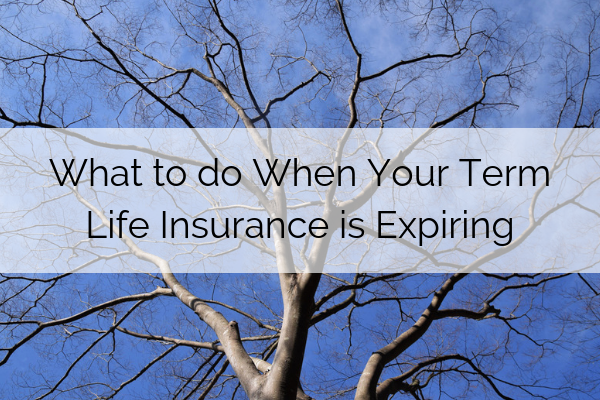Many families are discovering that a 20-year term for a life insurance policy isn’t enough.
In an ideal world, you buy life insurance when your kids are young or you’ve purchased your first home, and you need the coverage only for about 20 years. By the time your policy nears the end of its term, your kids are on their own, your house is mostly paid off, and you’ve accumulated enough money in retirement savings for your spouse to pay the bills if anything happened to you.
 But these days, many people in their fifties are still supporting grown kids who graduated with student- loan debt, or they’ve refinanced their mortgage and locked in a new 30-year term. They may have been divorced and are now supporting a new set of kids. Or they still haven’t saved enough to retire comfortably. Their coverage is about to end, but they still need the security that term insurance provides.
But these days, many people in their fifties are still supporting grown kids who graduated with student- loan debt, or they’ve refinanced their mortgage and locked in a new 30-year term. They may have been divorced and are now supporting a new set of kids. Or they still haven’t saved enough to retire comfortably. Their coverage is about to end, but they still need the security that term insurance provides.
“This is happening to thousands of people because 20- year term insurance first became popular about 20 years ago,” says John Ryan, CEO of Ryan Insurance Strategy Consultants in Greenwood Village, Colo., who works with fee-only financial advisers. Even though you can keep your policy beyond the initial term, the premiums jump enormously, and continue to increase. A 37-year-old man in good health who buys a $500,000 20-year term policy could pay about $360 per year for 20 years. But in year 21—at age 57—the premiums jump to $6,900 or more depending on the company, says Byron Udell, CEO of AccuQuote.com, an independent insurance brokerage.
Fortunately, you have a number of options for extending your coverage, including some that didn’t exist when you bought insurance a couple of decades ago. Term insurance rates have decreased significantly over the past 20 years, and if you’re in your fifties or early sixties and relatively healthy, premiums for a new policy can still be affordable. Some policies even provide “living benefits,” which allow you to tap your death benefit early if you have a chronic illness, or they can double as long-term-care insurance. If you have health issues, you may be able to convert your current coverage to a permanent policy that remains in force for the rest of your life.
If your term life insurance policy is nearing the end of its term, don’t wait until it expires to review your needs. You have the most options while the policy is still in force.
Buy a new term policy
Term insurance prices have dropped over the past 20 years because of competition, the ease of comparing rates online, and medical advances that have led to longer life spans. You may be able to get a new policy that locks in a rate for 10 years or more and doesn’t cost much more than your current coverage. For example, a healthy 57-year-old man could buy a 10- year term policy that would provide $500,000 in coverage for about $1,151 a year. Or he could buy a
20-year term policy for about $2,050 a year, says Udell.
Hilary and David Graf bought 20-year term policies when they had their first child—and then they had five more kids. When their policies were about to expire five years ago, they were supporting most of their kids, who ranged in age from 15 to 22.
As a personal finance teacher at a high school near Richmond, Va., Hilary understood the importance of life insurance, and the couple started shopping for new policies. “We realized we were grossly underinsured,” she says. The Grafs worked with AccuQuote and found a Transamerica term policy with living benefits that would let them access cash from the death benefit early for certain medical conditions. Hilary bought a $750,000 20-year policy for about $1,600 a year, and David bought a similar policy for about $1,800 per year. “You don’t think you’re going to need it, but if something happens, you’re covered,” she says.
The decision to buy a policy with living benefits was prescient. Hilary, now 55, developed debilitating Lyme disease. She eventually left her job and went in search of successful treatment. After providing medical records to her insurance company, she received about $50,000, which helps her pay for treatment in California. The living benefits payout reduced her death benefit by about $150,000, but having the cash for health care was more important to her. “What a blessing this was for us,” she says. “I wish I could go back and talk to my students about this.”
Several insurance companies now offer chronic-illness riders. The specifics vary. They may pay out only for certain maladies—such as a heart attack or cancer—or they may pay out for a broad range of conditions. Some policies reduce the death benefit on a dollar-per- dollar basis. Others, such as Graf’s, reduce the death benefit on a case-by-case basis (hers was reduced by a 3-to-1 ratio).
Buy a new permanent policy
If you need life insurance for an unknown amount of time—you’re supporting a special-needs child, for example, or you want to leave a legacy for your family or a charity—you may want permanent insurance. If you’re relatively healthy, you may get a better deal by
buying a new policy rather than converting your current term coverage. There are several kinds of permanent policies.
Guaranteed universal life provides the largest death benefit for the lowest level premiums. The policy doesn’t earn much cash value, but the premiums never change. A healthy 57-year-old man could pay about $7,000 per year for a $500,000 GUL policy, says David Eisenberg, of Quantum Insurance Services in Los Angeles.
Whole life has level premiums that tend to be at least double the annual cost of GUL. For example, a 57- year-old man could pay about $17,800 per year for a whole life policy that starts out with a $500,000 death benefit, then never pay any more premiums after age 70, says Eisenberg. The death benefit increases, and the policy also builds cash value that you can use for any reason. You can withdraw up to the amount you paid in premiums tax-free and borrow more through a policy loan that you never have to repay (it’s subtracted from the death benefit). Premiums will be lower—and the cash value at 70 much higher—if you start at age 50 or earlier.
A whole life policy offers a lot of flexibility. “Some people use one-third for retirement income, one-third for a legacy for their children, and one-third as a legacy for charity,” says Scott Sparks, a Northwestern Mutual wealth management advisor and CEO of Sparks Financial. The cash value grows based on the insurer’s investments; returns tend to be higher than short-term interest rates. But because of policy fees, it can take three or four years before your cash value starts to accumulate.
Long-term-care benefits
Many insurers now offer policies that combine life insurance and long-term-care coverage. These policies generally let you access a portion of your death benefit early if you need long-term care. You can tap the benefits if you require help with two out of six activities of daily living (such as bathing, eating or toileting) or if you have cognitive impairment—in other words, the same benefit triggers as for stand-alone long-term-care coverage. Unlike stand-alone policies, however, the premiums generally can’t increase.





